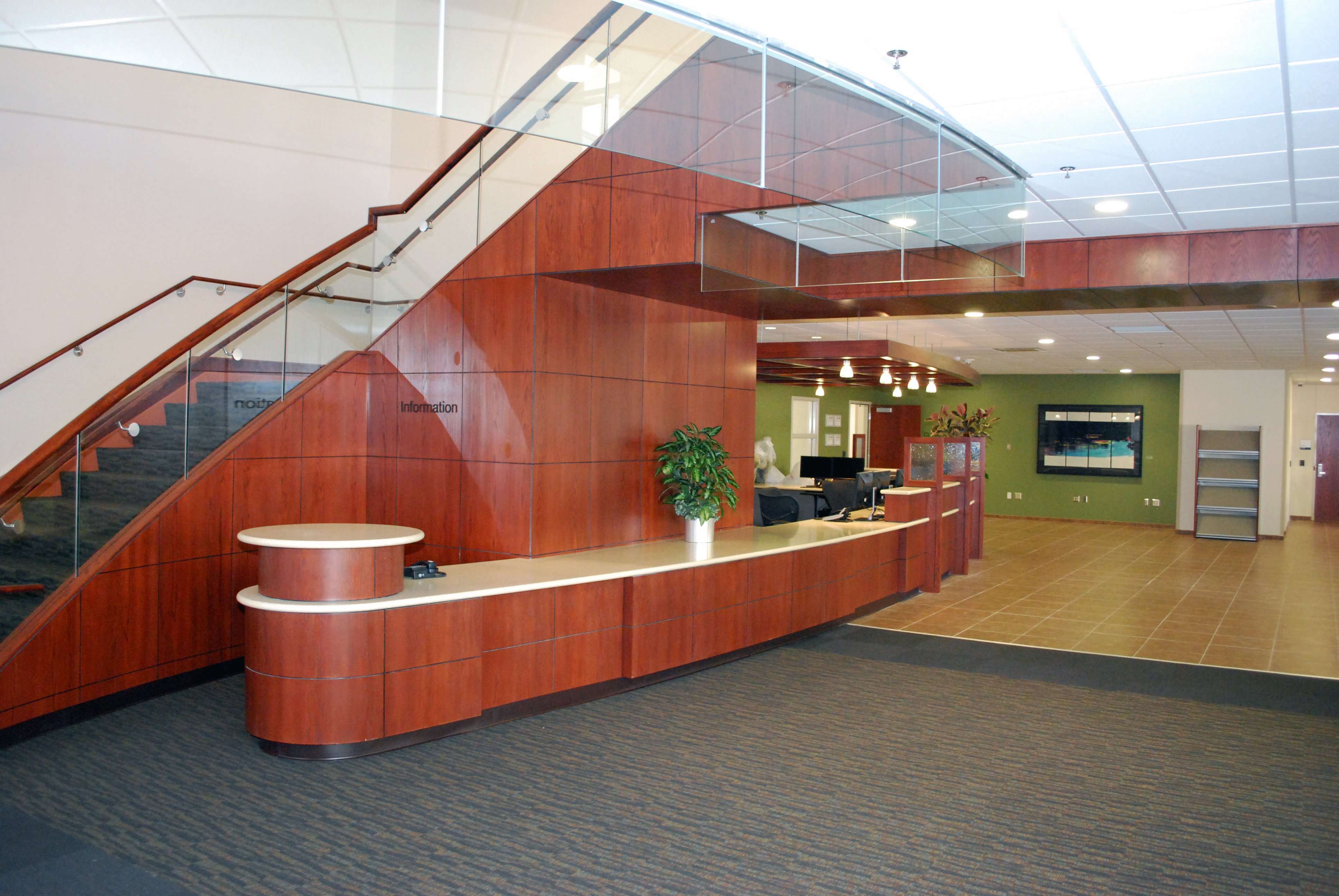The new Holden Cancer Center of University of Iowa Hospitals and Clinics recently held an open house attended by patients, staff and members of the public. The $12 million facility was designed by Heery International.
Totaling 64,000-sf of renovated space, the Holden Cancer Center is located on two floors in the Pomerantz Family Pavilion. It includes new clinic and infusion bay areas in a modern, patient-friendly environment, offering everything from chemotherapy to radiation and other treatments. The new cancer clinic provides a significant increase in patient space from the prior facility, which was located in an adjacent building. It features 37 exam rooms and two procedure rooms. The second-floor infusion suite grew from 28 chairs to 40, eight of which are in private rooms.
Many aspects of the center's design are aimed at enhancing efficiency and reducing patient waiting times. In particular, the centralized and team-specific staff workrooms are intended to improve patient tracking, and a new pneumatic tube system, which will deliver samples to the lab in two minutes rather than the 13 minutes for current delivery, reduces wait times for lab results. There also is an on-site pharmacy. The clinic also includes a larger and more centralized space for research, bringing together a core group of cancer center staff who work on clinical trials. The cancer center conducts nearly 300 clinical trials at any given time. BD+C
Related Stories
| Jan 19, 2011
Architecture Billings Index jumped more than 2 points in December
On the heels of its highest mark since 2007, the Architecture Billings Index jumped more than two points in December. The American Institute of Architects reported the December ABI score was 54.2, up from a reading of 52.0 the previous month.
| Jan 19, 2011
Large-Scale Concrete Reconstruction Solid Thinking
Driven by both current economic conditions and sustainable building trends, Building Teams are looking more and more to retrofits and reconstruction as the most viable alternative to new construction. In that context, large-scale concrete restoration projects are playing an important role within this growing specialty.
| Jan 10, 2011
Architect Jean Nouvel designs an island near Paris
Abandoned by carmaker Renault almost 20 years ago, Seguin Island in Boulogne-Billancourt, France, is being renewed by architect Jean Nouvel. Plans for the 300,000-square-meter project includes a mix of culture, commerce, urban parks, and gardens, which officials hope will attract both Parisians and tourists.
| Jan 10, 2011
Michael J. Alter, president of The Alter Group: ‘There’s a significant pent-up demand for projects’
Michael J. Alter, president of The Alter Group, a national corporate real estate development firm headquartered in Skokie, Ill., on the growth of urban centers, project financing, and what clients are saying about sustainability.
| Jan 7, 2011
BIM on Target
By using BIM for the design of its new San Clemente, Calif., store, big-box retailer Target has been able to model the entire structural steel package, including joists, in 3D, chopping the timeline for shop drawings from as much as 10 weeks down to an ‘unheard of’ three-and-a-half weeks.
| Jan 7, 2011
How Building Teams Choose Roofing Systems
A roofing survey emailed to a representative sample of BD+C’s subscriber list revealed such key findings as: Respondents named metal (56%) and EPDM (50%) as the roofing systems they (or their firms) employed most in projects. Also, new construction and retrofits were fairly evenly split among respondents’ roofing-related projects over the last couple of years.
| Jan 7, 2011
Total construction to rise 5.1% in 2011
Total U.S. construction spending will increase 5.1% in 2011. The gain from the end of 2010 to the end of 2011 will be 10%. The biggest annual gain in 2011 will be 10% for new residential construction, far above the 2-3% gains in all other construction sectors.
| Jan 7, 2011
Mixed-Use on Steroids
Mixed-use development has been one of the few bright spots in real estate in the last few years. Successful mixed-use projects are almost always located in dense urban or suburban areas, usually close to public transportation. It’s a sign of the times that the residential component tends to be rental rather than for-sale.














